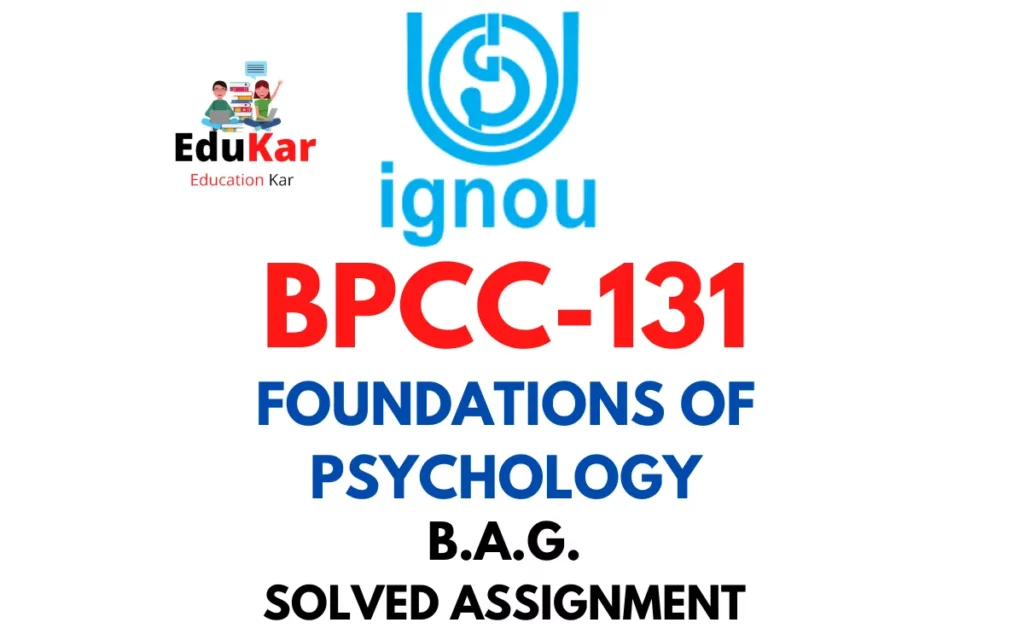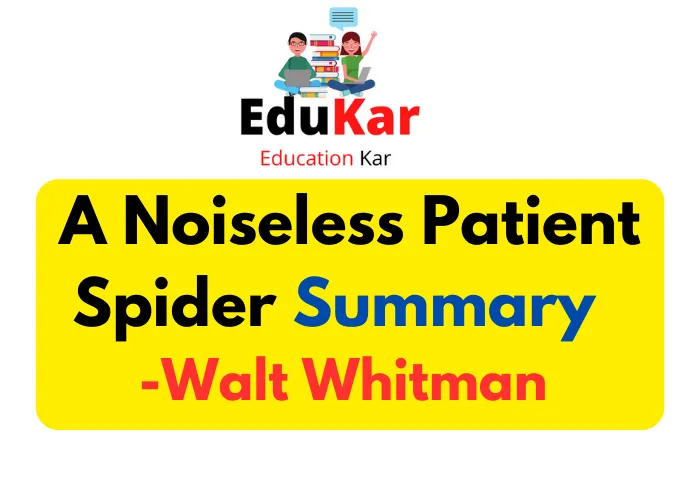Contents
- 1 Assignment – I
- 2 Answer the following in about 500 words each.
- 3 1. Critically examine the nature of the Mughal state.
- 4 2. Discuss briefly the village structure and nature of land rights in medieval South India.
- 5 Assignment – II
- 6 Answer the following questions in about 250 words each.
- 7 3. Discuss in brief the problems faced by Humayun and how did he overcome it?
- 8 4. Critically examine Akbar’s policy towards autonomous chieftains.
- 9 5. Write a note on the Mughal jagir system.
- 10 Assignment – III
- 11 Answer the following questions in about 100 words each.
- 12 6. History writing in Persian during the sixteenth century.
- 13 7. Sur administration.
- 14 8. Town and port administration of the Mughals.
- 15 9. Allison Busch on medieval Indic literary tradition.
- 16 10. Akbar’s attitude towards religion.

| Title | BHIC-109: IGNOU BAG Solved Assignment 2022-2023 |
| University | IGNOU |
| Degree | Bachelor Degree Programme |
| Course Code | BHIC-109 |
| Course Name | HISTORY OF INDIA-V |
| Programme Name | Bachelor of Arts (General) |
| Programme Code | BAG |
| Total Marks | 100 |
| Year | 2022-2023 |
| Language | English |
| Assignment Code | BHIC-109/ASST/TMA/2022-23 |
| Last Date for Submission of Assignment: | For June Examination: 31st April For December Examination: 30th September |

Assignment – I
Answer the following in about 500 words each.
1. Critically examine the nature of the Mughal state.
Ans: The Mughal Empire was one of the largest and most influential empires in the history of South Asia, ruling over a vast area stretching from Afghanistan to Bangladesh and beyond. The nature of the Mughal state was complex and multifaceted, shaped by the political, cultural, and economic forces of the time.
At its core, the Mughal state was an absolute monarchy, with the emperor holding ultimate authority over all aspects of government and society. The Mughal emperors were seen as divinely appointed rulers, with a mandate to rule over their subjects and enforce the laws of the state. The Mughals maintained a highly centralized administrative system, with a well-organized bureaucracy and a sophisticated system of taxation and revenue collection.
One of the key features of the Mughal state was its religious and cultural diversity. The Mughal emperors were Muslims, but they ruled over a diverse population of Hindus, Buddhists, Jains, and other religious groups. The Mughals made a deliberate effort to incorporate the cultural traditions of their subjects into their rule, and they often employed Hindu administrators and officials in their government. This cultural tolerance and openness helped to foster a sense of unity and stability within the empire, and it contributed to the spread of cultural and artistic traditions across the empire.
However, the Mughal state was not without its problems and challenges. One of the biggest challenges was maintaining control over the vast and diverse territories of the empire. The Mughals often relied on local rulers and military commanders to govern distant provinces, which led to the development of regional power centers and the emergence of local dynasties that challenged the authority of the emperor.
Another major challenge was the tension between the Mughal state and the religious and cultural traditions of the Hindu population. Although the Mughals made a deliberate effort to accommodate Hindu traditions, they also imposed certain religious restrictions on their Hindu subjects and attempted to convert them to Islam. This often resulted in resistance and conflict, and it contributed to the decline of the Mughal Empire in the 18th century.
Despite these challenges, the Mughal state was a remarkable achievement in South Asian history. It was a powerful and centralized empire that brought stability and prosperity to the region and helped to foster the development of a rich cultural and artistic heritage. The legacy of the Mughal state can be seen in the enduring monuments and institutions that it left behind, such as the Taj Mahal, the Red Fort, and the many magnificent palaces and gardens that dotted the cities of the empire.
2. Discuss briefly the village structure and nature of land rights in medieval South India.
Ans: Medieval South India, during the period of the Chola, Pallava, and Vijayanagara empires, was characterized by a hierarchical and complex village structure, with a clear definition of land rights and ownership. The society was divided into various castes and communities, with each having specific roles and duties, and the village was the basic unit of administration and governance.
The village was headed by a headman or Gramapati, who was responsible for maintaining law and order and collecting taxes. He was aided by a council of elders, who represented the various communities and castes within the village. The council was responsible for settling disputes and for the administration of justice.
Land was the primary source of wealth in medieval South India and was classified into several categories. There was royal land, which was owned by the king and used for revenue purposes. There was also temple land, which was owned by the temple and used for religious purposes. The remaining land was divided into two categories, inam land and ryoti land.
Inam land was granted by the king to individuals or communities as a reward for their service or as a tax concession. This land was considered inalienable and could not be transferred or sold. Ryoti land, on the other hand, was owned by the cultivators and was their primary source of livelihood. The cultivators had the right to transfer or sell their land, but only with the permission of the king.
The concept of landed property in medieval South India was different from that in the West. Land was considered a trust, and the king was considered the protector and guardian of the land. The cultivators had the right to cultivate the land and receive a share of the produce, but the land itself could not be transferred or sold without the king’s permission.
The nature of land rights in medieval South India was shaped by the agrarian economy and the dominant role of the state in regulating the use of land. The king had the power to grant or withhold land rights and to determine the conditions under which the land could be used. This control over land rights allowed the state to maintain its authority and to regulate the economy.
Assignment – II
Answer the following questions in about 250 words each.
3. Discuss in brief the problems faced by Humayun and how did he overcome it?
Ans: Humayun was the second Mughal Emperor of India and ruled from 1530 to 1540 and then again from 1555 to 1556. He was a complex and controversial figure who faced numerous problems throughout his reign. Some of the major problems faced by Humayun are as follows:
- Succession struggle: After the death of his father, Babur, Humayun had to face a succession struggle for the Mughal throne. This struggle was mainly between Humayun and his younger brother, Kamran, who wanted to secure the throne for himself.
- Rebellion by the nobles: Humayun’s rule was also marked by frequent rebellions by the nobles, who were dissatisfied with his policies and administration. These rebellions caused instability and weakened his position as the emperor.
- Military defeats: Humayun faced several military defeats during his reign, most notably against the Afghan king, Sher Shah Suri, who defeated Humayun’s forces and took control of the Mughal Empire.
- Lack of resources: Humayun’s rule was also plagued by a lack of resources, which made it difficult for him to maintain control over his empire. This was due to the fact that the Mughal Empire was not yet fully established and did not have a strong centralized system of administration.
Despite these problems, Humayun was able to overcome them and reclaim his throne. He did this by forming alliances with other powerful rulers and using his diplomatic skills to gain the support of the nobles. He also made a successful military campaign against Sher Shah Suri and was able to reclaim his empire.
4. Critically examine Akbar’s policy towards autonomous chieftains.
Ans: Akbar was one of the most successful Mughal emperors of India and ruled from 1556 to 1605. He was known for his policies of religious tolerance and his efforts to centralize the Mughal Empire. One of the key elements of Akbar’s policy was his approach towards autonomous chieftains.
Akbar’s policy towards autonomous chieftains can be viewed as both positive and negative. On the one hand, he recognized the importance of these chieftains in maintaining stability and order in remote regions of the empire. To maintain their loyalty, Akbar allowed them to retain their autonomy and control over their territories. He also granted them high-ranking positions in the Mughal administration and provided them with financial and military support. This helped to secure their loyalty and prevented them from rebelling against the central authority.
On the other hand, Akbar’s policy towards autonomous chieftains also had some negative consequences. The chieftains were often allowed to act independently and this led to a lack of accountability and control over their territories. They also became powerful and sometimes oppressed their subjects, leading to widespread discontent. This resulted in a fragmented and disorganized empire that was vulnerable to internal conflict and external threats.
5. Write a note on the Mughal jagir system.
Ans: The Mughal jagir system was a method of administration used by the Mughal emperors in India to govern their vast empire. The term “jagir” refers to a grant of land or revenue, usually given to a noble or an officer in return for their loyalty and services. The jagir system was introduced by Babur and was used by subsequent Mughal emperors to reward their loyal followers, maintain control over their territories, and finance their military campaigns.
Under the Mughal jagir system, a jagirdar, or a landowner, was given control over a specific region and was responsible for collecting revenue from the local population. The jagirdar was required to provide the Mughal emperor with a portion of the collected revenue and to maintain law and order in his territory. In return, the jagirdar was given a degree of autonomy and was allowed to retain control over the territory as long as he remained loyal to the emperor.
The jagir system was an important aspect of Mughal administration as it allowed the emperors to reward their loyal followers, maintain control over their territories, and finance their military campaigns. However, it also had some negative consequences. The jagirdars became powerful and often oppressed their subjects, leading to widespread discontent. Additionally, the jagir system was prone to corruption and abuse, as the jagirdars were often more concerned with their own interests than with serving the emperor.
Assignment – III
Answer the following questions in about 100 words each.
6. History writing in Persian during the sixteenth century.
Ans: History writing in Persian during the sixteenth century was an important aspect of Mughal culture and administration. Persian was the official language of the Mughal court and was used by the emperor and his officials to communicate with one another and to maintain records of their activities. Many important historical works were written in Persian during this time, including the Baburnama, the Akbarnama, and the Tarikh-i-Sher Shahi. These works provided valuable insights into the history of the Mughal Empire, including the reigns of the emperors, their military campaigns, and their administrative policies. The historical works written in Persian during the sixteenth century played an important role in shaping the historical legacy of the Mughal Empire and remain an important source of information for historians today.
7. Sur administration.
Ans: The Sur dynasty was a Persian dynasty that ruled India from 1540 to 1556. The Sur administration was characterized by a highly centralized and bureaucratic system of government, which was modeled after the Persian Sassanian Empire. The emperor was the ultimate authority and was assisted by a council of ministers, who were responsible for various aspects of the administration, including finance, justice, and military affairs. The empire was divided into provinces, each of which was governed by a governor who was responsible for maintaining law and order and collecting revenue. The Sur administration was known for its efficient tax collection system and its emphasis on military expansion. Despite these strengths, the Sur administration was also characterized by political instability, which contributed to the decline of the dynasty. Nevertheless, the Sur administration remains an important aspect of Indian history and continues to be studied by historians today.
8. Town and port administration of the Mughals.
Ans: The town and port administration of the Mughals was an important aspect of their empire-building strategy. The Mughal emperors were keen to maintain control over their territories, including towns and ports, which were crucial for trade and commerce. To this end, they appointed governors, known as nawabs, to oversee the administration of towns and ports. The nawabs were responsible for maintaining law and order, collecting revenue, and ensuring the smooth functioning of trade and commerce.
In towns, the nawabs were assisted by a number of officials, including tax collectors, police officers, and market inspectors. They were also responsible for overseeing the construction of public buildings, such as mosques, schools, and baths. In ports, the nawabs were responsible for regulating trade and commerce, collecting customs duties, and ensuring the safety of shipping. They also maintained a naval force to protect the coast and to monitor sea trade.
The town and port administration of the Mughals was an important aspect of their efforts to maintain control over their territories and to promote trade and commerce. The appointment of nawabs and other officials helped to ensure the smooth functioning of towns and ports and provided a source of revenue for the Mughal emperors. The town and port administration of the Mughals remains an important aspect of Indian history and continues to be studied by historians today.
9. Allison Busch on medieval Indic literary tradition.
Ans: Allison Busch is a scholar of South Asian literature and culture, and has written extensively on the medieval Indic literary tradition. Busch’s research focuses on the cultural, literary, and religious practices of South Asia, and she has written several articles and books on the subject, including “Poetry of Kings: The Classical Hindi Literature of Mughal India.”
In her work, Busch explores the rich and diverse literary traditions of medieval India, including the classical Hindi literature of the Mughal period. She argues that this literature was not simply a reflection of political and cultural trends, but was an important means of self-expression and a source of cultural identity for the people of India. She also examines the interplay between religion and literature in the medieval period, and the ways in which religious and cultural practices were intertwined in the production and dissemination of literary works.
Busch’s work on the medieval Indic literary tradition has contributed to our understanding of the cultural and literary landscape of South Asia during this period. Her insights into the religious and cultural practices of the time, as well as her examination of the role of literature in the formation of cultural identity, have helped to deepen our understanding of this rich and complex period of Indian history. Busch’s work remains an important resource for scholars of South Asian literature and culture, and continues to be widely read and cited in the field.
10. Akbar’s attitude towards religion.
Ans: Akbar, the third Mughal emperor of India, was known for his tolerant and inclusive attitude towards religion. He was born into a Muslim family, but throughout his reign, he showed a keen interest in religious and philosophical discussions, and was known to have engaged with scholars and leaders from different religious communities.
Akbar believed that all religions had something valuable to offer, and he sought to create a society where people of different religions could live together in peace and harmony. He encouraged inter-religious debates and discussions, and was known to have attended religious ceremonies of different communities, including Hindu, Jain, and Christian.
Akbar’s most famous initiative in this regard was the creation of the Ibadat Khana, or the House of Worship, where religious leaders and scholars could come together to discuss their beliefs and engage in religious debates. This was a remarkable step, especially considering the religious and cultural diversity of the Mughal Empire, and demonstrated Akbar’s commitment to creating a tolerant and inclusive society.
Akbar’s attitude towards religion was a departure from the prevailing norms of the time, and his legacy continues to be remembered as an example of religious tolerance and openness. Today, Akbar is widely regarded as one of India’s most enlightened and progressive rulers, and his attitude towards religion is considered a model for contemporary societies that are facing religious and cultural diversity.
How to Download BHIC-109 Solved Assignment?
You can download it from the www.edukar.in, they have a big database for all the IGNOU solved assignments.
Is the BHIC-109 Solved Assignment Free?
Yes this is absolutely free to download the solved assignment from www.edukar.in
What is the last submission date for BHIC-109 Solved Assignment?
For June Examination: 31st April, For December Examination: 30th October





![Best 5 Speech on Yoga [Long & Short] Speech-on-Yoga](https://edukar.in/wp-content/uploads/2023/03/Speech-on-Yoga.webp)
![Speech on Subhash Chandra Bose [Short & Long] Speech-on-Subhash-Chandra-Bose](https://edukar.in/wp-content/uploads/2023/03/Speech-on-Subhash-Chandra-Bose.webp)









